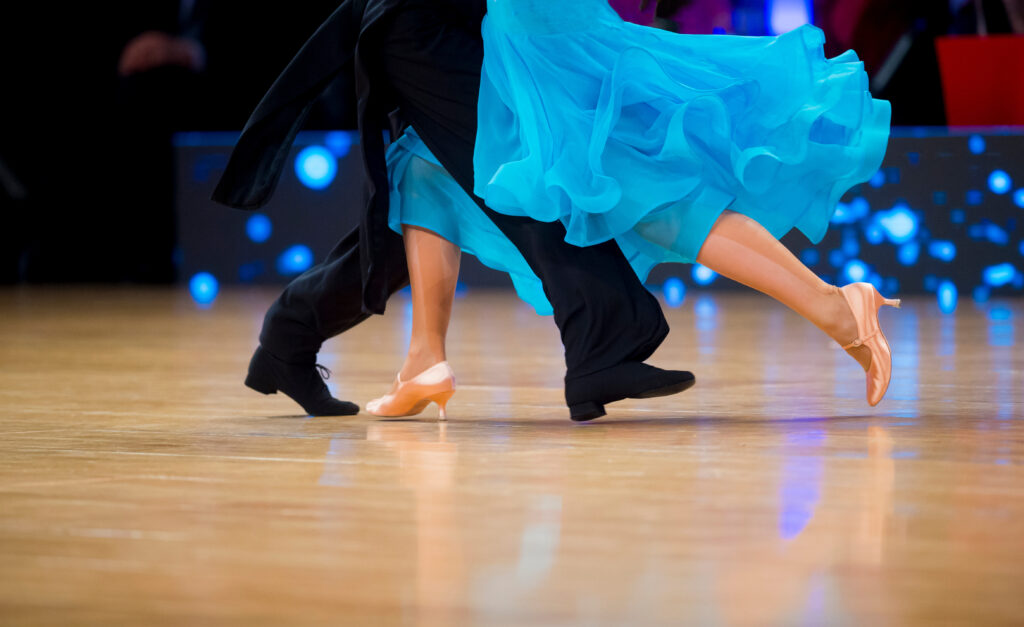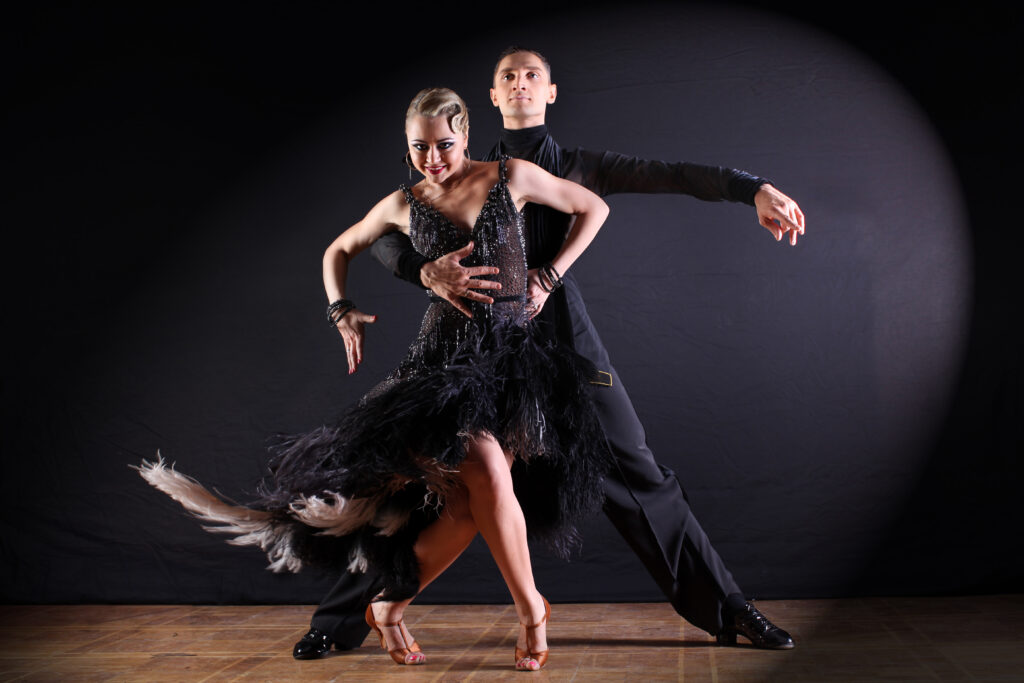
Dance Styles
Latin or Ballroom dance lessons in Florida at Silva Dance in Daytona Beach
Here you will find everything you need. We teach International and American styles at any level starting from dance beginners who never took a dance lesson and have no experience (two left feet OK) to advanced competitive dancers who are looking for coaching lessons on the highest level of the Ballroom Dancing. We continually train professionals for further advancement of their degrees in all forms of dance.
Ballroom dance is a set of European partner dances, which are enjoyed both socially and competitively around the world, mostly because of its performance and entertainment aspects. Ballroom dancing is also widely enjoyed on stage, film, and television.
Ballroom dance may refer, at its widest definition, to almost any recreational dance with a partner. However, with the emergence of dance competition (now known as Dancesport), two principal schools have emerged and the term is used more narrowly to refer to the dances recognized by those schools.

The International School, originally developed in England[1] and now regulated by the World Dance Council (WDC) and the World DanceSport Federation (WDSF), is most prevalent in Europe. It encompasses two categories, Standard and Latin, each of which consist of five dances—International Waltz, International Tango, International Viennese Waltz, International Slow Foxtrot, and International Quickstep in the Standard category and International Samba, International Cha Cha, International Rumba, International Paso Doble, and International Jive in the Latin category. A “Standard” or “Latin” competition encompasses all five dances in the respective category, and a “Ten Dance” competition encompasses all ten dances. The two styles, while differing in technique, rhythm, and costumes, exemplify core elements of ballroom dancing such as control and cohesiveness.

The American School, also called North American School, is most prevalent in the United States and Canada, where it is regulated by USA Dance and Canada Dancesport (CDS) — the respective national member bodies of the WDSF. It also consists of two categories analogous to the Standard and Latin categories of the International School, respectively called Smooth and Rhythm. The Smooth category consists of only four dances—American Waltz, American Tango, American Foxtrot, and American Viennese Waltz, omitting American Peabody (the American School equivalent to Quickstep) — while the dances selected for competition in the Rhythm category are American Cha Cha, American Rumba, American East Coast Swing (the American School equivalent to International Jive), American Bolero, and American Mambo. A “Smooth” or “Rhythm” competition encompasses the dances in the respective category, and a “Nine Dance” competition encompassing all nine of these dances is analogous to the “Ten Dance” competition of the International School. USA Dance additionally recognizes American Peabody, American Merengue, American Paso Doble, American Samba, American West Coast Swing, American Polka, and American Hustle as ballroom dances in which sanctioned competition may take place.
Note that dances of the two schools that bear the same name may differ considerably in permitted patterns (figures), technique, and styling.
Exhibitions and social situations that feature ballroom dancing also may include additional partner dances such as Lindy Hop, Night Club Two Step, Night Club Swing, Bachata, Country Two Step, and regional (local or national) favorites that normally are not regarded as part of the ballroom family, and a number of historical dances also may be danced in ballrooms or salons. Additionally, some sources regard Sequence Dancing, in pairs or other formations, to be a style of ballroom dance.[4]
The Differences Between International & American Styles
Another popular question of Frequently Asked Questions is: What is the difference between American and International Ballroom dancing styles?
Between these two Ballroom Dancing styles are lots of similarities, but there are lots of differences.
For example: In International (Standard), all dances are danced in closed position (that means hips of dance partners are attached) verses in American (Smooth) are varieties of holds more than just “closed position” is used, and more freedom of movement is allowed. In the similarities, we could mention those dance principles, technique and footwork are the same, as dance patterns are the same.
Rhythm and Latin have more differences:
American and International Rumba are rhythmically counted very differently, and the use of the knees is different.
Chacha cha is similar in the count but different in hip motion, and the speed of dance has a big difference.
And Swing and Jive also have some similarities – very similar patterns, timing but Jive is faster and more cardio dance versus swing that is slower and much easier to dance (spatially at social dance occasions).
The biggest difference between the two styles is in the “Smooth” Dances.
The most apparent difference is that international standard includes quickstep, which is not part of American smooth. The other major difference is that the international style permits figures in closed positions only, while the American style allows open positions and even solo actions.
American Style “Smooth” has a greater diversity of patterns and is easier to learn at the beginner and intermediate levels. At the advanced and competition level, American Style is as hard to master as the International Style. In “American Style,” the box step is the basic component for all the dances and is used in some form as a conversion into more complex steps and patterns.
In the “Latin” or “Rhythm” Dances, the difference is how the Cuban or Latin movement is performed.
American Style of Ballroom Dancing uses a natural foot and soft knee movement to achieve the hip drop associated with Cuban motion. In the international style, the hips are forced up and out by stepping onto a straight knee.